Formula C3H6O3 Melting point 143 °C | Molar mass 90.08 g/mol | |
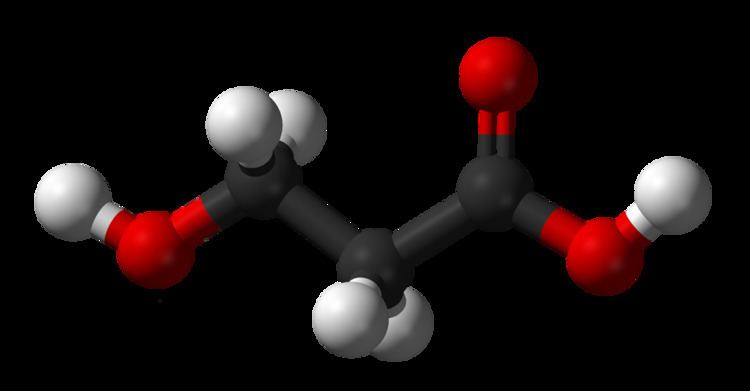 | ||
Related compounds | ||
3-Hydroxypropionic acid is a carboxylic acid, specifically a beta hydroxy acid. It is an acidic viscous liquid with a pKa of 4.5. It is very soluble in water, soluble in ethanol, and miscible with diethyl ether. Upon distillation, it dehydrates to form acrylic acid.
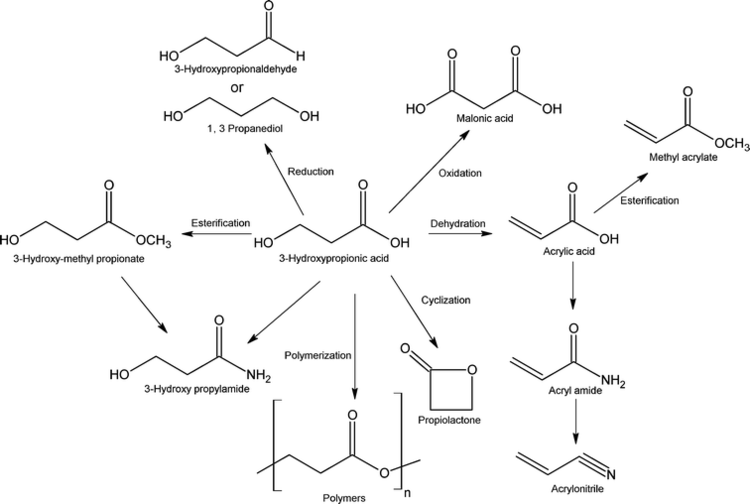
3-Hydroxypropionic acid is used in the industrial production of various chemicals such as acrylates. It can be produced by engineered microbes.
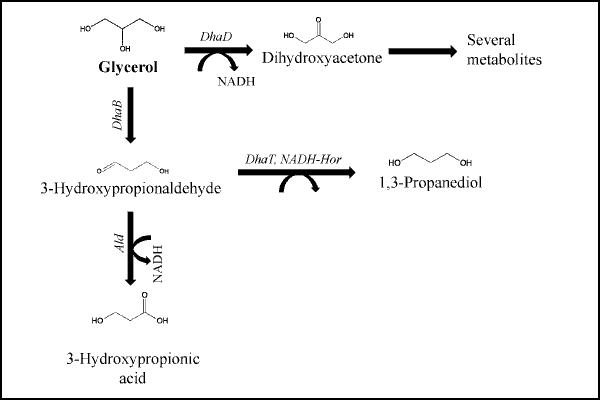
Applications in producing a biodegradable polymer
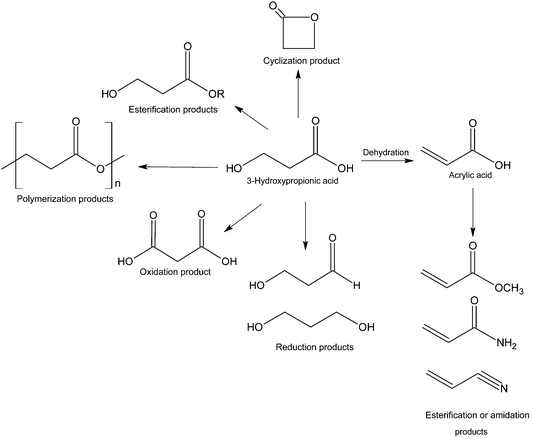
A method has been developed by the University of Minnesota to produce a biodegradable polymer polyester known as poly(3-hydroxypropionic acid). The method combines the high-molecular weight and control aspects of ring-opening polymerization with the commercial availability of the beta hydroxy acid, 3-hydroxypropionic acid which is abbreviated as 3-HP. Since 3-HP can be derived from biological sources, the resulting material, poly(3-hydroxypropionic acid) or P(3-HP), is biorenewable. The new method allows direct synthesis of the bio-based polymer P(3-HP) from 3-HP, a commercial monomer that is derived from corn. The method uses a single vessel reactor for simple synthesis and rapid scale up. The method results in a higher molecular weight which makes the polymer more structurally sound using a process with lower toxicity than competing technologies.
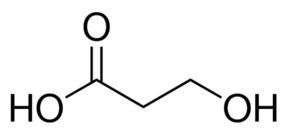
The market for a bio-based and biodegradable replacement for polyester is expected to grow rapidly during the next five years. The bio-based polyester, P(3-HP), has attractive mechanical properties, such as rigidity, ductility, and exceptional tensile strength in drawn films and can be created using the new lower toxicity method. On account of these properties, P(3-HP) has applications in packaging or biodegradable plastics.


